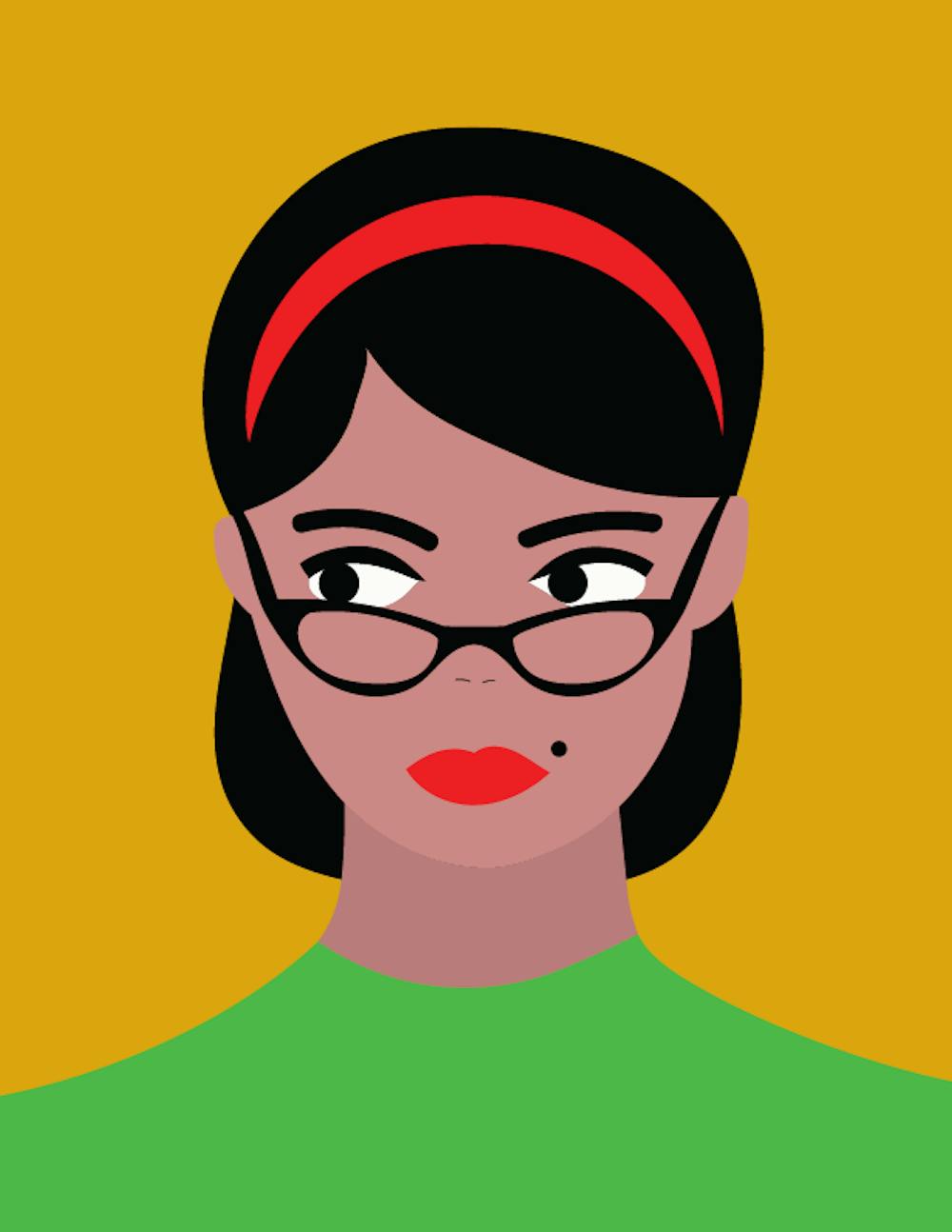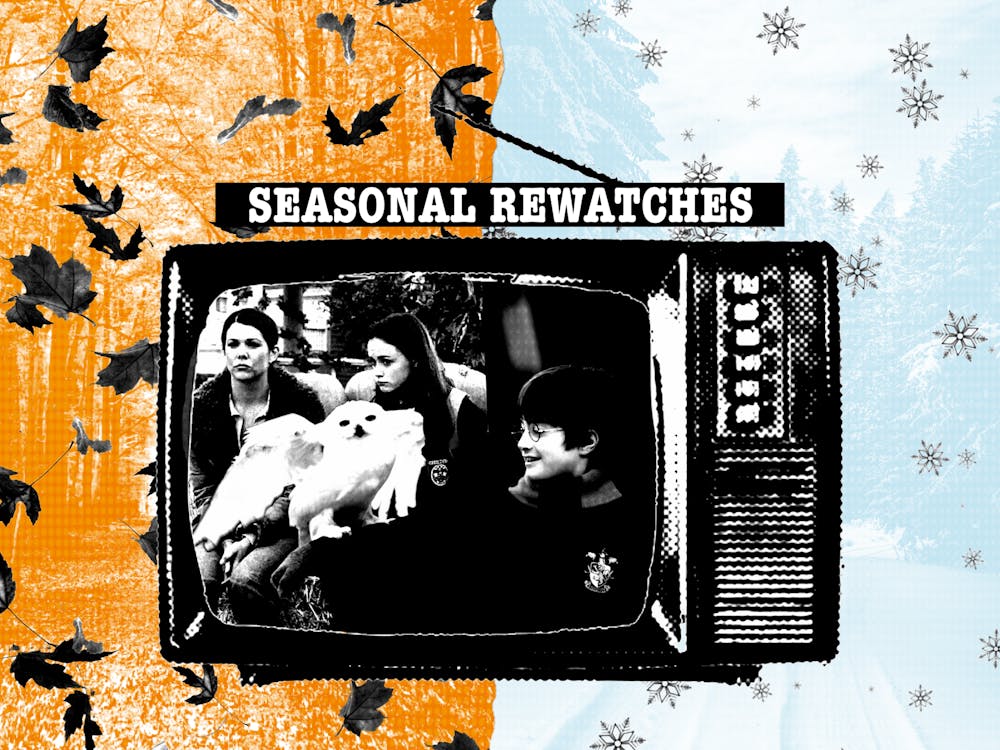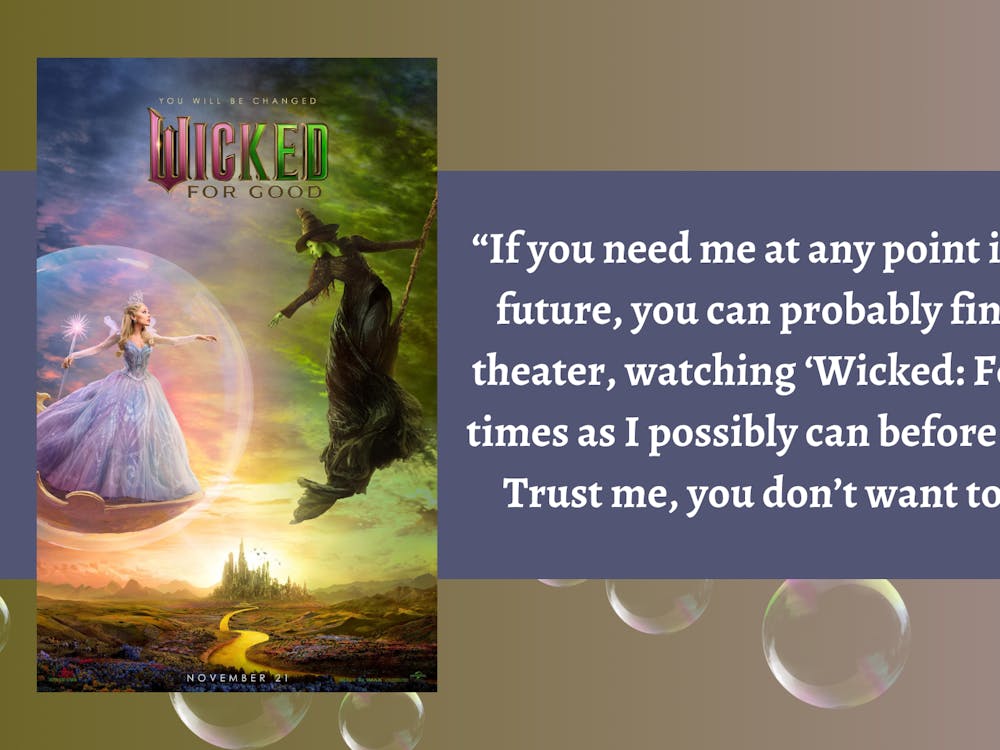Ten minutes into 2008’s “Iron Man,” a movie that has no business dealing with journalism, the titular superhero is leaving a Las Vegas casino. A young woman approaches Tony Stark as he climbs into his car, and says she’s a writer for Vanity Fair. She wants to ask him a few questions.
In the next scene, she’s crawling out of his bed in the morning, greeted by his assistant (Gwyneth Paltrow’s Pepper Potts). Potts ushers the Vanity Fair reporter out because, she says, part of her job is “taking out the trash.”
On a surface level, these scenes make up a tired plot device to establish Stark as a relentless playboy (while also hinting that he’ll end up with his uptight, unimpressed assistant, because obviously).
But this film, along with many others released in the last 20-or-so years that feature female journalists, paints an insulting and inaccurate portrait of the profession. If everything you knew about female journalists came from recently released films and TV shows, you’d probably think:
After being a bakery owner, photographer and coldhearted executive with unprecedented capacity for change, “journalist” is the job most likely to guarantee women a meet-cute and subsequent marriage with a super hot guy, whether he’s their source or their boss.
As a woman, the best way to get a source to talk is to sleep with them. And even if they weren’t initially planning to, women should always write about people they sleep with. Those stories will either score them a promotion, a Pulitzer or a boyfriend. Maybe all three!
Seriously, there are only two ways to get stories. Women journalists can sleep with people, or they can lie their way into them (i.e. claiming they’ve been sent to tutor an eastern European princess in math and not write about her older brother for a tabloid; I’ll get to that later).
If a woman journalist wants to write a story without the help of some guy they’re sleeping with or lying to, they should work with a man, or even better, a team of men. Just to be safe.
Female journalists in film weren’t always portrayed as unethical, irresponsible and incompetent. Both 1942’s “Woman of the Year” and 1940’s “His Girl Friday” present powerful female reporters (played by Katharine Hepburn and Rosalind Russell, respectively) who intimidate their husbands and are worshiped by their male coworkers.
Russell’s character, Hildy Johnson, is probably the best-known and most iconic on-screen female journalist. At the film opens, she’s planning on leaving her successful career as a reporter behind to marry and settle down, but after getting roped into covering a wild news story and realizing she loves the job too much, she stays.
However, many of today’s female journalists in TV and film aren’t just irritating. They’re insulting, and potentially discouraging for young women hoping to break into the profession. I don’t think anyone is dropping out of journalism school today because they’re afraid they’ll have to sleep with all their sources and spend the rest of their lives looking like disheveled, wannabe J. Crew models.
Media representation isn’t everything. But it does matter.
Enjoy what you're reading?
Signup for our newsletter
As Nora Ephron, my favorite writer (who happened to work as a reporter for the New York Post and a columnist for Esquire before turning to screenwriting in the 1980s), once said, “For many of us, a great deal about what we feel about love has been completely shaped by movies.”
They don’t just shape how we feel about love, though. Movies help shape how we feel about a lot of things. Life. Death. Friendship. Careers. Family. How we see and think about the world is, unquestionably, influenced by the media we consume.
“The New Romantic” is the most recently released film that’s blatantly rude to female journalists (that I know of).
Blake Conway (Jessy Barden), the 2018 Netflix movie’s college student protagonist and wannabe columnist, has the audacity to introduce herself by monologuing about Nora Ephron movies.
Blake writes a pretentious column griping that romance is dead, because some of her fellow millennials have never seen “When Harry Met Sally.” Her editor rejects the column, and Blake, who believes she is the Ephron of her time, is indignant.
“If they said your column was boring, just make it less boring,” Blake’s friend tells her later.
But Blake insists she’s a natural-born columnist. She continues writing uppity diary entries about how millennials slaughtered the art of romance, and continues to be rejected, so she turns to the only other thing women journalists in film can write about now besides love and relationships: sex.
It’s great that Blake stands up for herself when her (male) editor doubts her, and I firmly believe young women should do whatever they want, but we didn’t need another female journalist character who can only write about who she sleeps with. Do you know how little time women reporters in real life spend writing about people they sleep with, and how much time they spend covering conflict in the Middle East, free speech, sexual harassment, fashion and everything else? Where, with the exceptions of 2015’s “Spotlight” and 2003’s “Veronica Guerin,” are the female journalists in media covering real issues and not sleeping with their sources and/or bosses to do so?
“The New Romantic” is the most recent example of film treating the female journalist character poorly, but Netflix’s “A Christmas Prince” is perhaps the most egregious perpetrator. The film gained so much notoriety from being so-bad-it’s-good that Netflix released a sequel last year and is planning to churn out a third this winter.
“A Christmas Prince’s” terrible female journalist is Amber Moore (Rose McIver). She’s an editor for a magazine called Beat Now (or Now Beat; it’s never clarified). Amber longs to become a writer (even though in reality, editing is considered a promotion from writing) and gets her chance when she’s sent to cover a playboy prince’s coronation in Europe.
Amber arrives in the fictional country Aldovia and is whisked away to a palace press conference, where Prince Richard (Ben Lamb) is supposed to speak. He doesn’t show, and the reporters are shepherded off the grounds.
But because Amber is a female journalist in a modern-day film, she is determined to chase her story by any means necessary, however risky or unethical, and sneaks back into the palace. Conveniently, Prince Richard’s little sister’s American tutor is set to arrive around the same time, and when she’s caught, Amber assumes the woman’s identity.
She spends a few days gathering research on and falling in love with Prince Richard, until he (surprise!) becomes aware of her super ethical and journalistically-sound plan. Amber returns to New York, quits Beat Now (Now Beat?) and starts her own blog. She proves what a talented, innovative journalist she is by calling it “Amber’s Blog.”
Her story is (surprise again!) a shocking tell-all about how Prince Richard isn’t such an asshole playboy after all. It’s a hit, and Richard flies back to the States to propose on New Year’s Eve, all of Amber’s scheming suddenly forgiven.
“A Christmas Prince” has been hailed as “hilariously bad” and “simultaneously the best and worst thing Netflix has ever produced.” As much as I agree, and enjoy introducing other people to the trainwreck of a production, it’s also troubling to me. “A Christmas Prince” exemplifies everything wrong with modern-day media depictions of female journalists.
There are, of course, films in which female reporter characters simply do their jobs and don’t need to sleep with editors or sources to get ahead. See: 2015’s “Spotlight” and 2003’s “Veronica Guerin,” both based on true stories.
But there are so many more like “A Christmas Prince,” in which female journalists end up sleeping with their sources or bosses to advance professionally. There’s 2015’s “Trainwreck,” in which Amy Schumer’s magazine writer character sleeps, and later falls in love with, her main source for a feature; there’s 1981’s “Absence of Malice,” in which Sally Field’s reporter character falls for a murder subject in a story she’s working on; there’s 2009’s “Crazy Heart,” in which Maggie Gyllenhaal’s reporter character falls for her source, Jeff Bridges; and many, many more.
Even the female journalist in “Cloudy With a Chance of Meatballs,” the 2009 film based on the children’s book about food raining on a sad, former tourist trap of an island, dates her primary source (the inventor of the machine which causes clouds to rain food).
And, with the exception of “Sabrina, The Teenage Witch,” TV shows treat female journalists even worse than films do. “Gilmore Girls’” Rory and “House of Cards’” Zoe are probably the most well-known fictional female journalists of my generation, but they’re also offensive representatives of the profession.
Zoe Barnes (Kate Mara) is an enterprising young metro beat reporter at the start of “House of Cards,” itching to be taken seriously at the fictional Washington Herald newspaper. She starts sleeping with congressman Frank Underwood (Kevin Spacey), the House Majority Whip, to obtain D.C. insider information, and uses it to work her way up in the Herald newsroom and ultimately jump ship for the website Slugline (also fictional).
Zoe breaks off the affair, and at Slugline, she and her colleagues launch an investigation against Frank, who discreetly murders another congressman in season one. Frank does not appreciate this, and shoves Zoe in front of an oncoming subway train.
Any real reporting Zoe gets to do on the show is undermined by the fact that she had to sleep her way up through the Herald’s ranks, and had she not had an affair with Frank, she wouldn’t have succeeded as a writer.
To be fair, her mentor is Janine Skorsky (Constance Zimmer), who tells her, “I used to suck, screw and jerk anything that moved just to get a story,” when she suspects Zoe is sleeping with a politician early in season one.
Rory Gilmore’s (Alexis Bledel) character takes a decidedly more ethical path to becoming a reporter. Until the series’ Netflix-produced sequel, “Gilmore Girls: A Year in the Life,” Rory doesn’t sleep with any sources or editors to further her career.
But she does score her first and only internship on the show in season five by dating Logan Huntzberger (Matt Czuchry), the son of a prominent media conglomerate owner. After Logan’s extended family insults Rory at a dinner party, his father offers Rory a reporting internship at the fictional Stamford Eagle Gazette newspaper as a peacemaking gesture.
It would be silly of Rory not to accept the internship, which she does, but the situation just perpetuates the stereotype in film and TV that female journalists can’t succeed without men’s help.
Besides the fact that Rory couldn’t seem to succeed without the Huntzbergers’ help, and the fact that she became acquainted with Logan while interviewing him for a story, Rory’s just a bad journalist. She becomes indignant at any bit of criticism toward her and she’s entitled. When Logan’s father criticizes her performance at the Stamford Eagle Gazette in season five, and when she’s not chosen for a New York Times fellowship in season seven, she’s shocked.
Zoe Barnes and Rory Gilmore aren’t the only small-screen offenders. “Parks and Recreation” introduces the show’s resident reporter, Shauna Malwae-Tweep, in its third episode. She immediately sleeps with a source for a story she’s working on, and shows up to an interview 15 minutes late the next morning without a pen, because she left hers at his house.
There are two TV shows that manage to defy these stereotypes and present realistic, inoffensive female journalists: “The Bold Type,” which premiered on Freeform in 2017 and just wrapped up its third season, and “Sabrina the Teenage Witch,” which aired from 1996 to 2003 and is not to be confused with Netflix’s spooky “Sabrina” remake.
“The Bold Type” follows three millennials working for the fictional women’s lifestyle magazine Scarlet (loosely based on Cosmopolitan). One of them, Jane Sloan (Katie Stevens), is a reporter, and she’s guided by her fiercely feminist editor Jacqueline. Jane isn’t perfect, but she’s also allowed to write about things besides who she’s sleeping with, like breast cancer, politics and motherhood. She also doesn’t need to sleep with any editors or sources to advance her career.
Bizarrely, the best representation of a female journalist we have is Sabrina Spellman (Melissa Joan Hart), teenage witch.
“Sabrina” is a fun, campy sitcom with gloriously cheap 1990s special effects about a high-schooler being raised by her two aunts. In the pilot, they tell Sabrina she’s a witch, and so are they.
The most intriguing thing about Sabrina Spellman is, given the fact that she is a witch and also at the top of both her high school and college classes, she can do anything she wants with her life. This is impressed upon us often throughout the show’s seven seasons, usually from her encouraging aunts, but also Sabrina’s own self-confidence.
Sabrina could be anything on Earth or in the magical “Realm” where much of her family resides, and she chooses to be a journalist. “Sabrina the Teenage Witch” doesn’t just do the bare minimum of showcasing a female journalist. The show treats journalism like a real profession, not just a quirky hobby reserved for quirky rom-com women.
The first five seasons of the show are pretty silly, focused on Sabrina’s magical high-school-based hijinks, and the sixth season is still pretty campy. But in the seventh season, Sabrina gets a real job working for a magazine before becoming a freelancer, and she does it well.
As early as episode three in season one, Sabrina writes an editorial for her school paper about how the administration gives all its attention to football and has little regard for academics. She stands by her column and meets the inevitable backlash with conviction for her beliefs. It’s not the most serious example, but it sets the tone for the rest of the show.
Obviously, female journalists are allowed to have romantic relationships and casual hookups. But they’re also professionals, just like male journalists, and there’s no reason why this can’t be depicted in film or on TV. Women are capable of writing stories and obtaining journalistic jobs without sleeping their way into them.
I’m not a professional writer. But I’ve been a journalism student for four years and worked at three editorial internships. I’ve never seen any female writers (or male ones, for that matter) act like Zoe Barneses or Amber Moores.
I’ve only seen Sabrina Spellmans and Hildy Johnsons.




